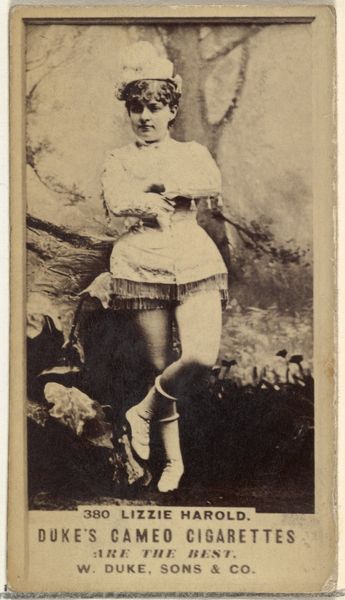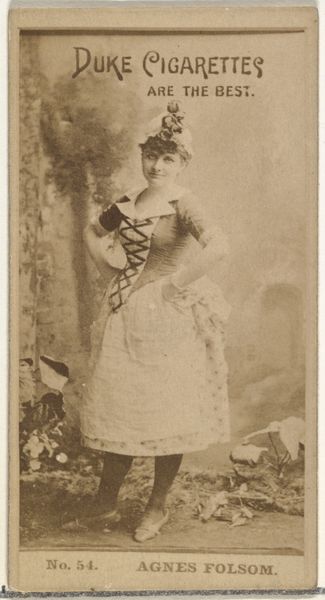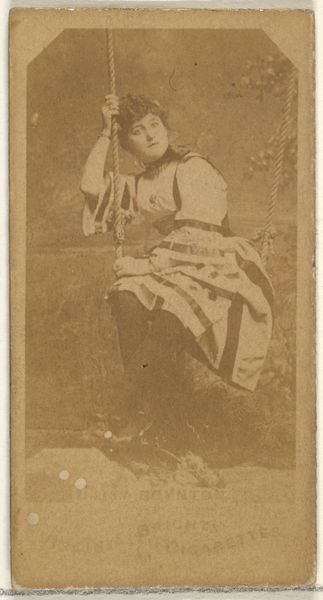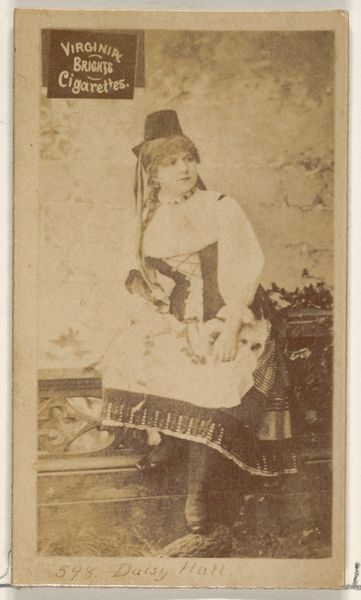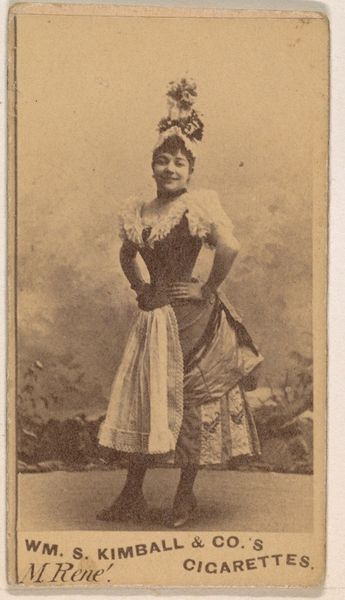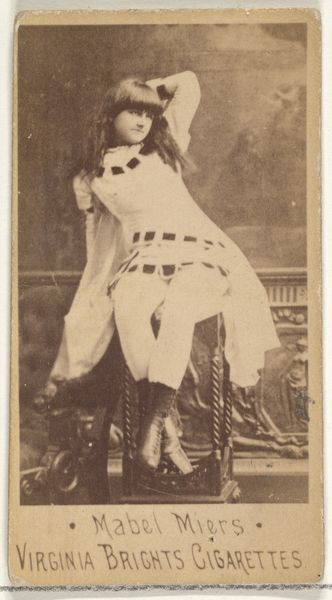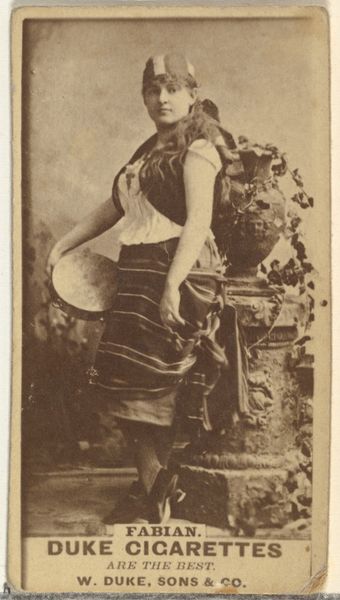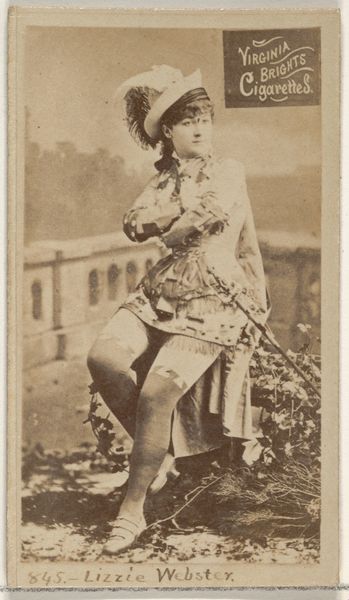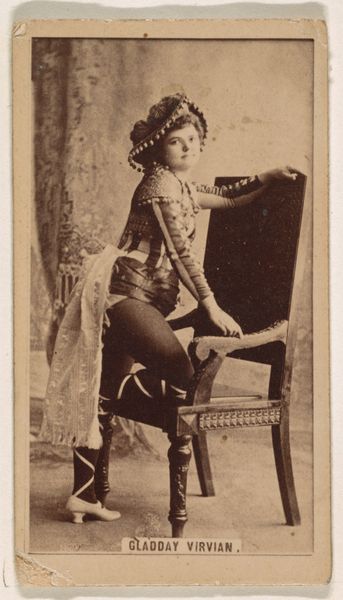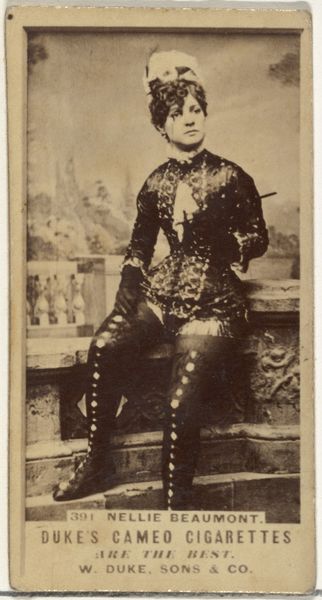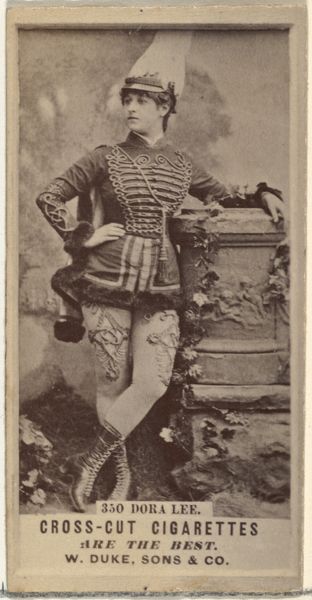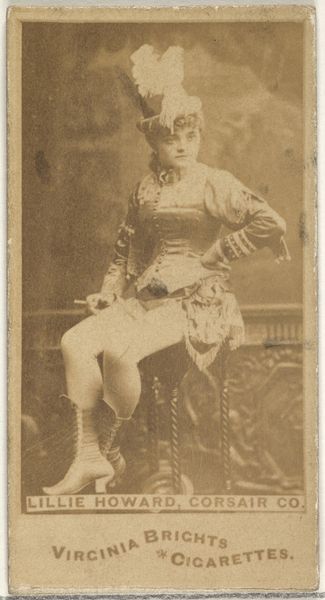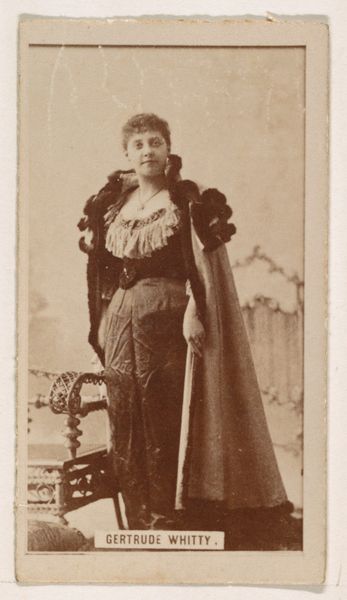
Card Number 203, Anna Parole, from the Actors and Actresses series (N145-5) issued by Duke Sons & Co. to promote Cameo Cigarettes 1880s
0:00
0:00
drawing, print, photography
#
portrait
#
drawing
# print
#
photography
#
19th century
Dimensions: Sheet: 2 11/16 × 1 3/8 in. (6.8 × 3.5 cm)
Copyright: Public Domain
Curator: This card, featuring Anna Parole, is part of the "Actors and Actresses" series issued in the 1880s by W. Duke, Sons & Co. as promotional material for their Cameo Cigarettes. It is a fascinating glimpse into how consumer culture utilized popular figures in the late 19th century. Editor: There is something theatrical, in a rather performative way. The whole setting feels intentionally staged, it’s very constructed. The neutral tones give the portrait a strong sense of history. What’s most interesting to me is the almost brazen acknowledgement of her role in selling these products, with her image right above an advertisement blurb. Curator: Exactly. The material production is key: The card itself, likely a print based on a photograph, becomes a vehicle for disseminating both an image and a brand. The choice of using actors and actresses also speaks volumes about the culture of celebrity and consumption in that era. Duke, Sons & Co. are shrewdly tying their product to recognizable, aspirational figures. Editor: And this act, a seemingly simple portrait, now becomes fraught with questions. Who was Anna Parole? Was she aware, or concerned about how her image would be used to boost the consumption of tobacco products? What implications does this have, for representations of women who worked in theatre and the cultural obsession with celebrity? There are all the elements to read her image in the wider cultural narrative. Curator: Her pose, and the entire scene, can be read on many levels, really. In terms of the materials, you’ve got the photograph itself, the inks used for printing, and then the paper or cardstock that gives it form and longevity. Also think about where these cards were manufactured and distributed – factors that heavily impact its value and historical trajectory. Editor: Definitely, understanding the intersections here provides great insight, considering this photograph was both a means of commercializing this women’s identity, and shaping ideas around femininity and aspiration in the gilded age. What was the process like, what conditions did she need to accommodate, and what freedoms did she have when portraying this specific version of herself to her fans? Curator: Thinking of this piece within the framework of consumerism allows us to think critically about the labour and material that go into seemingly disposable ephemera. Editor: Exactly, from Anna Parole’s labour to the laborers in factories, printing presses, farms producing tobacco, and the consumers that fed that wheel: all invisibly working and buying into what Anna Parole came to represent.
Comments
No comments
Be the first to comment and join the conversation on the ultimate creative platform.
